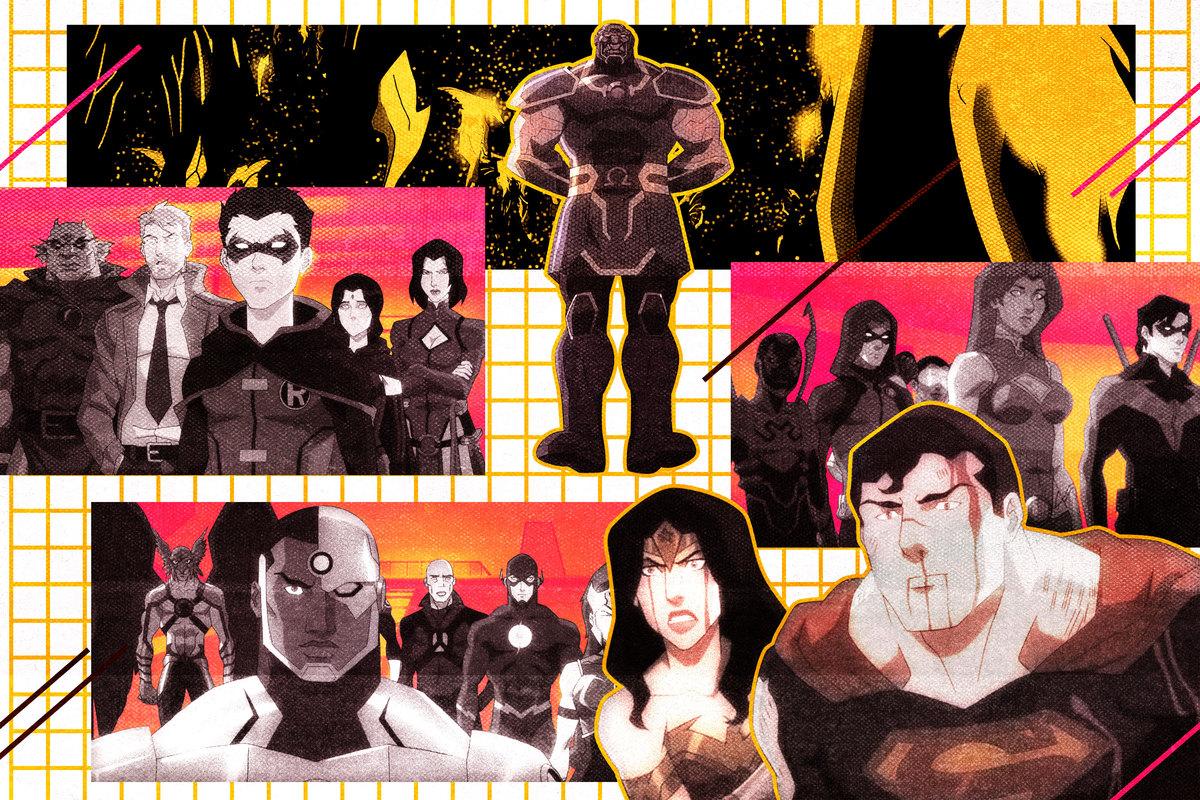
Justice League was a giant, lumpen, meandering misfire; a scarcely visible consolidation of several plotlines from DC’s expanding Cinematic Universe. Its abject awkwardness was a result of the film’s 80-20 split between the competing visions of two directors—Joss Whedon’s snappy, colorful propriety and Zack Snyder’s xxxtreme dusky seriousness. Justice League is a movie in which Batman both uses the El Diablo interrogation voice and winces over a minor injury for several comedic beats like a carbon-plated Peter Griffin. #TheSnyderCut—which will actually, finally see the light of day, as announced last week—at least promises some internal consistency, by default.
Whatever else it promises—or threatens—is still a ways off. The seed of Snyder’s real story was the “Knightmare” dream sequence in Batman v Superman, where Superman, brainwashed by Darkseid, crushes a small Batman-led resistance after an apparent apocalypse. In this version, Lois Lane has been killed before Superman, in the Batcave by Darkseid, which brings him to heel. It’s a very loose variation on John Francis Moore, Kieron Dwyer, and Hillary Barta’s Superman: The Dark Side, a three-issue run in 1998 that marooned Kal-El on Apokolips to be raised as Darkseid’s “son.” This Superman is ruthless, obsessed with conquest, and totally down to kill people. The distance between this version and even the weird Fugue State Supes that made it into the theatrical release meant Snyder’s vision could never be contained by a reasonable film run time, and when HBO Max launches it in 2021 it could arrive as six TV-style chapters. I’ll watch it to be a part of history, and also because my job will probably demand it, but friends, I am not all that psyched. Partly because DC’s movies have largely been joyless train wrecks, and I’m not hopeful that “more” is the solution to that problem—but mostly because there’s already a great DC Universe–spanning crossover event out there that’s available to watch right now. It’s called Justice League Dark: Apokolips War.
Directed by Matt Peters and Christina Sotta, Apokolips War is the 38th DC animated film released since 2007, but resolves an arc that began with The Flashpoint Paradox (2013). That’s at least 15 movies’ worth of shared backstory that Apokolips often capitalizes on. But fear not—if you’ve seen Avengers: Endgame, most of these plot points should be familiar. Wracked with guilt and positively horny for justice, Earth’s mightiest protector abandons reason, takes the fight to a big, purple existential threat, and fails spectacularly. As a result, half the life on the planet is destroyed, and the remaining heroes are profoundly broken—in body, spirit, or both. Out of hope but also out of options, they mount a desperate counterattack with minimal chances of success. See what I mean? Even the silver bullet is the same—it’s the magic guy.
However, there’s a crucial difference between the Apokolips magic guy and the Endgame magic guy: One is compelling and one is kind of a killjoy. Benedict Cumberbatch is a great actor and Dr. Strange is a great character, but the marriage of the two was stilted and joyless, an insufferable, unfunny know-it-all, and not in a fun way. Constantine, on the other hand, admirably stalls Apokolips’s runaway momentum and makes up a large part of its emotional center. There’s definitely more of the former though: Originally created by Alan Moore, Rick Veitch, Steve Bissette, John Totleben, Jamie Delano, and John Ridgway, the John Constantine character has remained largely unchanged as the queer, ultra-British, chain-smoking, wise-cracking, good-hearted misanthrope for over 30 years. In 2014, Vulture writer Abraham Riesman wrote about how Constantine’s obscure cult status enabled this, and how increased visibility—like a network television show, or being the centerpiece of a home blockbuster, for instance—might rob him of his bona fides. But his surly nature has survived the apocalypse, even death, and has only come out a little cartoony. At a pivotal moment in Apokolips, Constantine shoots up from the ground: “Can’t even be a ruddy corpse in peace. Wankin’ ‘destiny’ can go bugger itself.”
Like Justice League did and the yet-to-be-seen #SnyderCut will, Apokolips bears only a passing resemblance to any comic, and goes to great lengths to establish itself as a mature DC story, for adults. Superman’s spectacular failure is shown in great gory detail, with limbs cleaved and torn apart, blood spraying everywhere, and actual entrails on the ground. Superman himself suffers a fate worse than death—a Kryptonite agent is injected to his blood stream, rendering him eternally mortal; his blood glows green and floods into the signature “S” on his chest, like a mark of Cain. It’s the kind of plot device that feels too self-consciously grim, and yet it forces the all-powerful man to be stronger than he’s ever been asked to be. I remember thinking that in the first few minutes of the film, he’s what I always imagined him to be—too strong to ever be “human,” a boring, short-sighted idealist—and by the end I saw him as I imagine I was always meant to, as a person who experiences doubt and whose rigid moral stance is a source of constant inner conflict. At least I think I thought that—I seem to recall him going through about five metaphysical transformations during the final sequence, so there’s a distinct possibility that I hallucinated the film’s conclusion.
I think I’ll watch it one more time. There’s ample time to do so between now and the release of the #SnyderCut, which, why do we need that again?